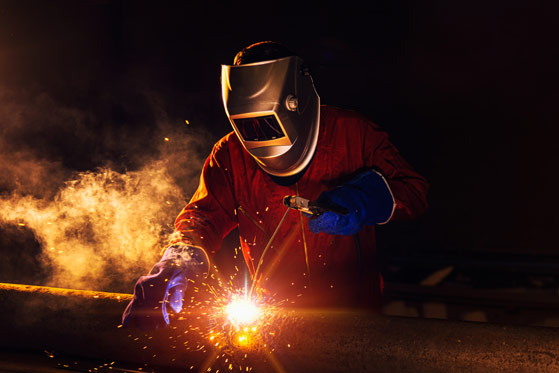How to Find the Right Welding Helmet
 Choosing the proper helmet and welders supplies for your projects is extremely important as it contributes to a large amount of your safety and wellbeing. With such a wide variety in helmet sizes, styles, safety features and more, you may be wondering how to choose the proper helmet for your needs. To learn about how to find the right welding helmet, we here at Canaweld have come up with a guide.
Choosing the proper helmet and welders supplies for your projects is extremely important as it contributes to a large amount of your safety and wellbeing. With such a wide variety in helmet sizes, styles, safety features and more, you may be wondering how to choose the proper helmet for your needs. To learn about how to find the right welding helmet, we here at Canaweld have come up with a guide.
Is It up to Code?
Whenever you undergo a welding project, there are certain codes and regulations that need to be met in terms of safety. The use of proper PPE for your eyes, face, hands, and body are just one of the many factors that involve welding safely. Even with a helmet, safety glasses should always be worn underneath so your eyes stay protected from any additional debris or sparks that could potentially enter the helmet during welding.
In Canada, it must be known that a helmet should be in compliance with the CSA (Canadian Standards Association). Making sure that a helmet aligns with these standards ensures a number of different safety features. One of these features include the helmet’s lens protecting you from any ultraviolet or infrared light. This type of light exposure without the proper protection can leave your eyes with short or long term damage.
The Helmets Style
In the world of welding helmets, there are two types of main styles that you can choose from — a passive helmet and an auto-darkening helmet.
A regular helmet has a lens that is tinted dark. When the helmet is pulled down, there is no light to dark state within the lens, the lens will just immediately be seen as dark. This means that when you use this helmet to inspect a weld, you will have to take the helmet off completely so you can properly see what is going on. Luckily, these helmets are not heavy and easy to take off, but even so these helmets are also incapable of selecting different shade levels for the lens.
Auto-darkening helmets are available to every type of welder regardless of experience, and allows you to adjust the shades of the lens based on different welding methods. The typical shade range for this type of helmet goes from about #8 to #13. When the helmet is put into the down position, you will be able to see through a light lens, making your vision clear so you can properly evaluate a welding job. Once the weld arc is struck, the lens will automatically darken to the shade you select.
Sensor Numbers
Helmets come in a range of sensors. Hobby level helmets typically have two sensors, whereas industrial grade helmets have four. For better coverage, more sensors are always recommended. This is particularly true for out-of-position welding due to the potential of an obstructed sensor. If you have a clear line of sight or are in production work, the minimum sufficient number of sensors can be three. Of course, four is always most optimal, especially when dealing with out-of-position work or fabrication.
Light Sensitivity
The welding filter darkness is determined by the amount of light required to pass through the helmet. For auto-darkening helmets, the welder can adjust the welding helmet light sensitivity.
Visibility
There is a plethora of different visibility/viewing options to pick from when dealing with welding helmets. There are larger visibility areas and smaller visibility areas. When looking for a larger viewing area, something to keep in mind is the helmet weight. When needing more visibility for welding and the welding area, a larger viewing area is required. If a more focused view is needed, a smaller visibility area is required.
Additional Things to Keep in Mind
Welding helmets are an important part of staying safe during the welding process, but there are a number of other important equipment pieces you will need to stay safe during this time. Make sure to always:
- Wear proper clothing: make sure the things you are wearing are non-flammable and protective. Even with a safety apron and jacket, it is important to maximize protection so you stay out of harm’s way.
- Ensure outer lens is clear: The outer cover lens on your helmet can get muddled with slag and spatter. Make sure that this is cleaned off so you can maintain consistent and clear visibility throughout the entire welding process.
Check Out Our Safety Equipment Today
If you are looking to find the best quality safety equipment for welding, look no further than our shop here at Canaweld. Our team provides a variety of different welding helmets so you can go about your next welding project with ease and, most importantly, the utmost in safety. To find out more about our welding supply store, be sure to call our team at (416) 548-5650 today! We look forward to hearing from you and helping you in any way we can!
